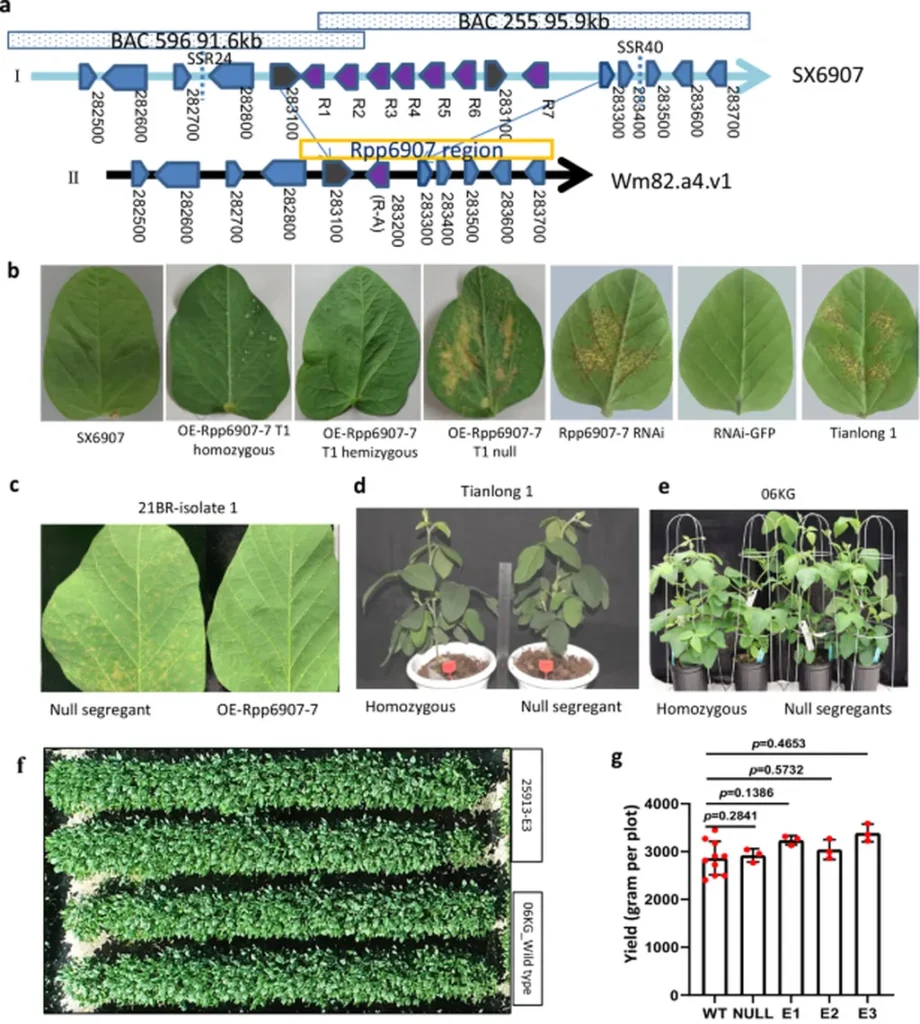In the heart of China, researchers have uncovered a promising breakthrough in the battle against one of soybean’s most formidable foes: the soybean cyst nematode (SCN). This tiny, yet devastating pest has long plagued farmers, often leading to significant yield losses and even total crop failure in heavily infested areas. Now, a team led by Hui Wang from the College of Bioscience and Biotechnology at Shenyang Agricultural University has identified a potential game-changer in the form of a bacterial extract and a key gene that could revolutionize soybean farming and the energy sector.
The study, published in *Frontiers in Plant Science* (which translates to “Frontiers in Plant Science” in English), demonstrates that pre-treatment with a bacterial extract known as CPT can enhance soybean resistance to SCN. This is achieved by increasing lignin content and peroxidase (POD) activity in soybean roots. But the real star of the show is a specific gene, GmPOD53L, which the team found to be upregulated under SCN stress. This gene is closely linked to increased peroxidase activity and lignin content, both of which are crucial for fending off the nematode.
“Our findings suggest that GmPOD53L plays a pivotal role in regulating the soybean’s response to SCN stress,” Wang explained. “By enhancing lignin content and POD activity, this gene effectively inhibits the invasion and development of SCN, offering a promising avenue for improving soybean resistance.”
The implications of this research are far-reaching, particularly for the energy sector. Soybean is a vital crop not only for food but also for biodiesel production. Enhancing its resistance to SCN can lead to more stable and predictable yields, which is crucial for the biofuel industry. “A more resilient soybean crop means a more reliable feedstock for biodiesel production,” Wang noted. “This could contribute to the stability and growth of the bioenergy sector.”
The study also opens up new possibilities for soybean breeding programs. By identifying GmPOD53L as a key player in SCN resistance, researchers can now focus on developing soybean varieties that are inherently more resistant to this pest. This could lead to the creation of SCN-resistant seeds, reducing the need for chemical pesticides and promoting more sustainable farming practices.
Moreover, the use of CPT as a bio-based seed coating could provide an eco-friendly alternative to traditional chemical treatments. This approach not only enhances crop resistance but also aligns with the growing demand for sustainable and environmentally friendly agricultural practices.
As the world grapples with the challenges of climate change and food security, innovations like these are more important than ever. The discovery of GmPOD53L and the potential of CPT offer a beacon of hope for farmers, the bioenergy sector, and the environment. With further research and development, this breakthrough could pave the way for a more resilient and sustainable future in soybean farming and beyond.

